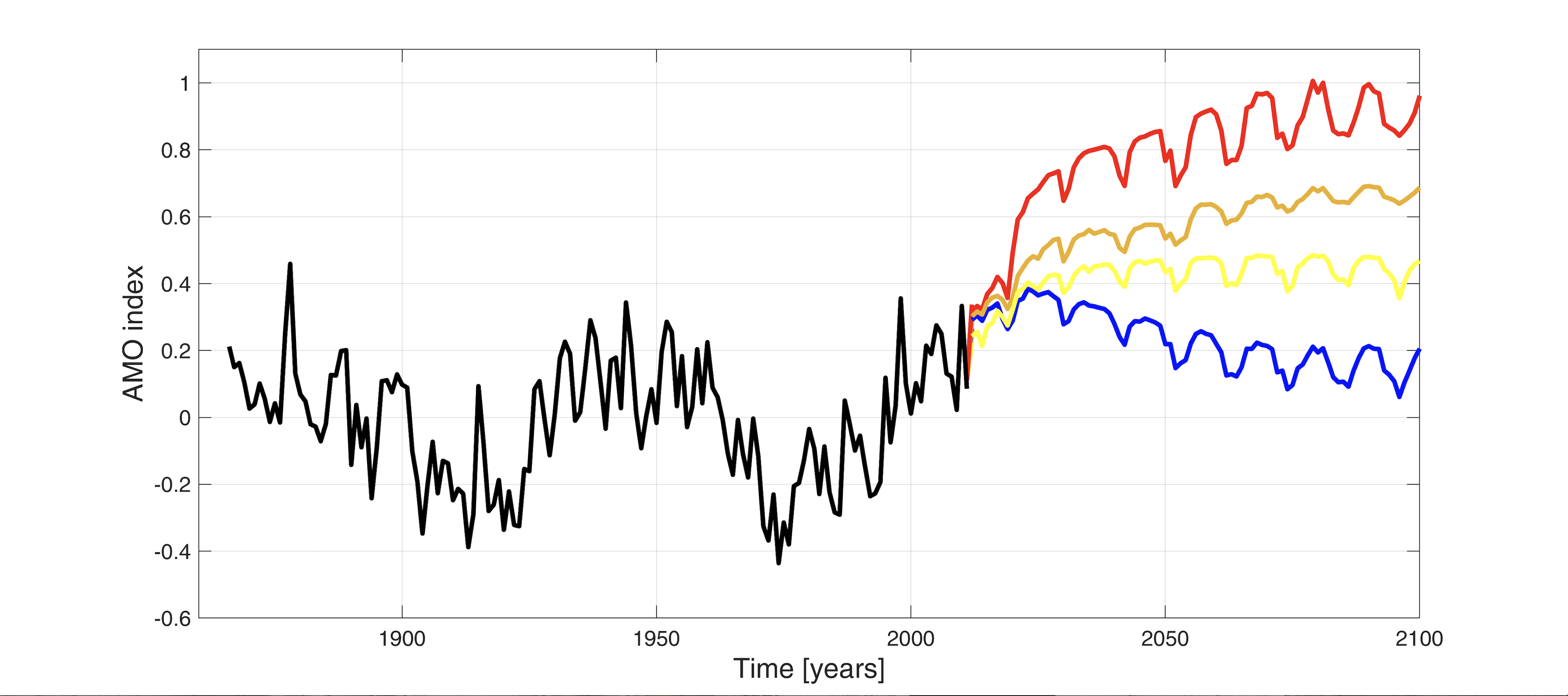The changes in the surface temperatures of the Atlantic Ocean observed in recent decades are conditioned by external influences, such as greenhouse gas emissions and dust containing sulphates. This is the result of a research coordinated by the CNR Institute on Air Pollution and published in Theoretical and Applied Climatology
A recent study by the Institute on Air Pollution of the National Research Council (Cnr-Iia), coordinated by researcher Antonello Pasini in collaboration with Stefano Amendola, of the Air Force Mountain Center and Emmanuel Federbusch of the Ecole National Supérieure de Techniques Avancées of Paris, shows how the changes in the surface temperatures of the Atlantic Ocean are anthropogenic in nature. The study is published in the international journal Theoretical and Applied Climatology.
"In the Atlantic Ocean it has been recorded that surface waters warm up and cool down over a period of about 60 years in an oscillation known as the" Atlantic multidecadal oscillation "(Amo), suggesting a cycle of natural variability", explains Antonello Pasini, Cnr-Iia. "We have verified the temporal evolution of Amo over the last 150 years using an artificial intelligence model with neural networks developed by Cnr-Iia for climatic analyzes, exploring the possible links between Amo's behavior and external influences on the climate system, both natural than anthropogenic. The first result of our study is that this trend does not appear as a manifestation of the natural variability of the climate, but is driven by external causes of change ”.
These external influences include the trend of solar radiation and the presence of natural elements such as volcanic dust, the concentration of greenhouse gases and the presence of dust containing sulphates emitted by human actions in dirty combustion, such as those of petroleum containing sulfur. “To understand which of these external elements are most important to guide Amo's performance, we analyzed what would have happened in the past if one of the influences, instead of varying, had remained stationary or constant”, continues Pasini. “We have seen that natural influences do not influence the course of Amo, while those of human origin do. And, among these, what most created the oscillation with a 60-year period was the variation that occurred in the powders containing sulphates ".
Thanks to the new model of artificial intelligence, it was also possible to predict the trend of Amo in the next decades under various future emission scenarios. “Most likely, between now and the end of the century, Amo will lose its characteristic oscillation, remaining instead in its positive phase, more or less marked in relation to the scenario that will come true. All this could have a very strong impact on the climate of all the continents bordering the Atlantic, for example with an increased activity of Atlantic hurricanes and a decrease in rainfall in northeastern Brazil, but also with a possible increase in rainfall. on the African belt of the Sahel. Europe could see an increase in rainfall in the summer in its north-western part ”, concludes Pasini. "Certainly, discovering that even dynamics that appeared natural are instead guided by our influences must raise awareness of past responsibilities, but also of those to which we are called in the future to avoid further drifts of the climate towards uncertain scenarios".
For information: Antonello Pasini, pasini AT iia.cnr.it

